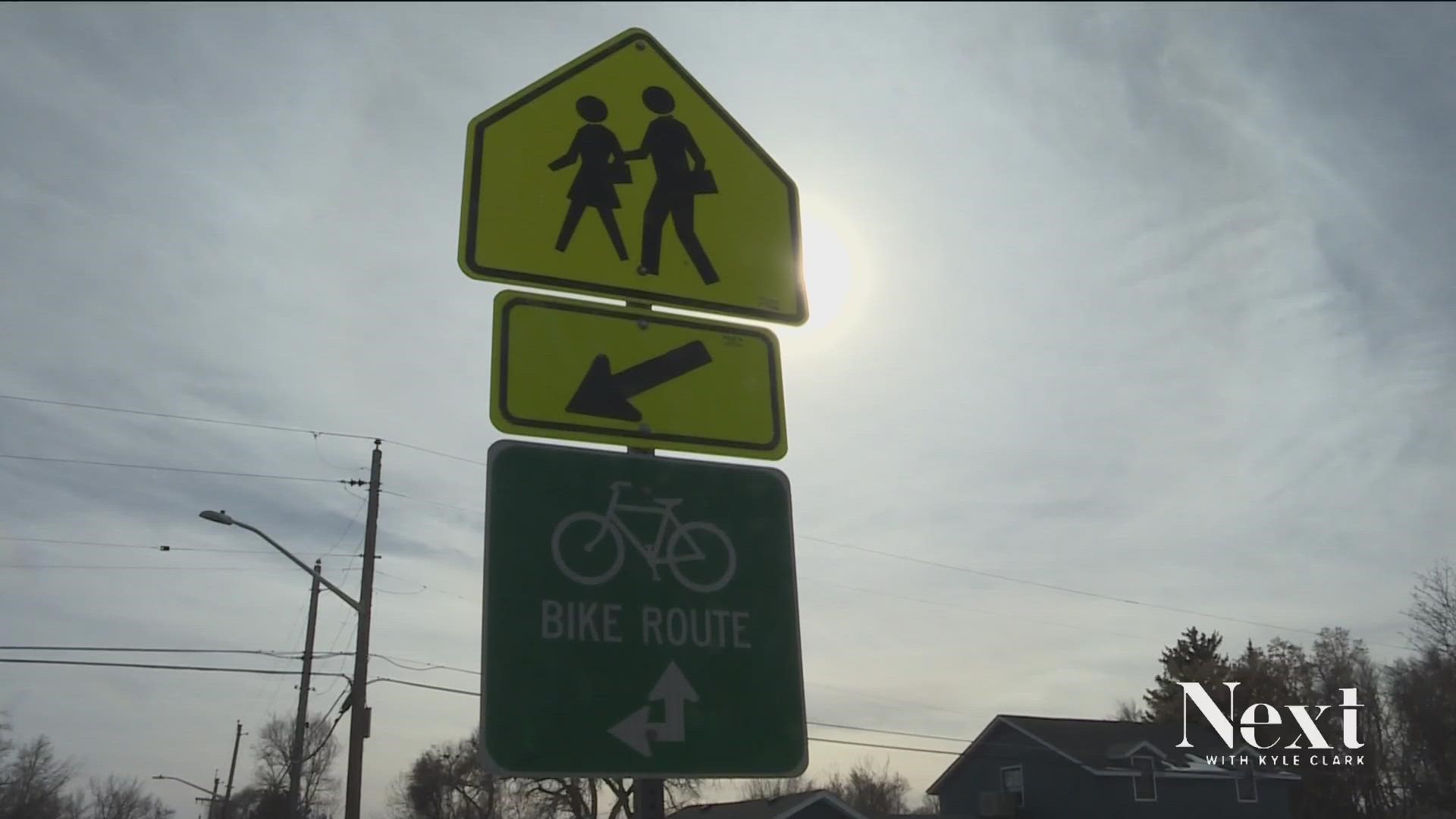DENVER — There are parts of Colorado where kids are having a tough time walking or biking to school because they don't have sidewalks or crosswalks.
A program exists that's designed to help with that exact problem, but it doesn't have enough funding and no direct source of money.
What's happening?
Two blocks away from Secrest Elementary School in Arvada, there is a stretch of sidewalk missing.
Parents started telling the city this is getting dangerous. The city did its own risk assessment and realized something needs to be done.
"It's important to make these improvements to provide safety for school children who are headed to and from school," said John Firouzi. He's the manager of the Arvada Public Works Department's Mobility and Planning Innovation Division.
"Safety is a top priority when it comes to transportation projects," he added. "Traditionally, the way this is done is through data. Data shows a pattern of crashes and collisions, and then we respond to those cases. In this case we are being proactive. There isn't that kind of safety concern yet. We did a risk assessment that shows the potential for that."
Through the Safe Routes to School Program, the city received a half-million dollar grant from the Colorado Department of Transportation (CDOT), with the city matching some of that money to build out 1,500 linear feet of sidewalks, along with working with families to educate them on biking and walking to school and safety changes.
"We have many demands to sidewalk needs," said Firouzi. "The CDOT grant helps us cover this and other locations. It's possible to complete through city of Arvada, but it may have taken longer to get to it."
The town of Center, in southern Colorado, is another grant recipient. Town and school officials there said they have a high rate of obesity among students.
During a webinar about their safety improvements, they said they wanted to encourage more kids to walk and bike to school, but they didn't have crosswalks in front of the school.
Kids didn't have bikes. When it was cold out, kids didn't have boots and coats and gloves to be able to walk or bike to school.
So, with the help of this grant, the district and town officials started working on improvements, including building out sidewalks, bridges and building up a bike fleet.
Funding
CDOT's Annelies van Vonno is running the program. She said they've reached around 43% of all elementary and middle schools in Colorado.
She also said they gave out $36 million worth of grants between 2005, when the program started, and 2017.
In that same time frame, they received $80 million worth of requests.
"That is something that it's been a struggle, you know, for all of us trying to get bicycle and pedestrian infrastructure built, is that the funding has prioritized highways and larger arterial roads and has not prioritized biking and walking for many, many decades," van Vonno said.
It's a struggle because the program was federally funded until 2012. Then, rules changed requiring applicants to have 20% cash to match the grant. From there, there was different legislation, all meant to solidify the program's existence, but differences were never resolved.
So, the Safe Routes program was absorbed into bigger programs, and a direct source of funding vanished, according to van Vonno.
Now, she said, they piece money together through various federal programs and finding additional state funding.
"I think that's starting to change now as CDOT prioritizes reducing greenhouse gases in our transportation system. So, we're starting to see a lot more funding for bicycle and pedestrian activity," she said.
Van Vonno said they are able to waive the matching grant portion for some grants to help out communities.
Other aspects of the program
She also said another aspect of the program is to reduce congestion around schools and in turn, improve air quality.
They also work with kids and families about the benefits of walking and biking to school and the safety improvements.
SUGGESTED VIDEOS: Full Episodes of Next with Kyle Clark

